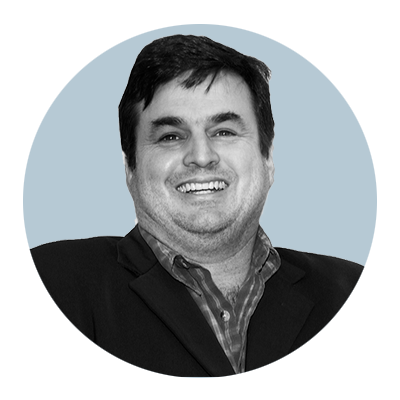A Placemaking Journal
Infrastructure Deficit Disorder: The doctor is in
This past week, Chuck Marohn and Justin Burslie of Strong Towns gave their Curbside Chat in the beloved San Diego neighborhood of Hillcrest. Chuck’s visit was possible through a fun collaboration between Walt Chambers of Great Streets San Diego, Ben Nicholls, Executive Director of the Hillcrest Business Association, and myself. Forty of San Diego’s most engaged built environment professionals filled the room with a happy-hour sense of electricity in the air.
Chuck then proceeded to ground that spark.
With his very honest, stark, and poignant perspective, Chuck deconstructed our nation’s infrastructure maintenance deficiencies and compared our current pattern of development to a bonafide Ponzi scheme. For example, California needs an additional $37 billion per year just to maintain our existing highway system. Like experiencing Springsteen’s “Nebraska” or Boston’s City Hall for the first time, Chuck’s message weighed heavily on the audience as he painted a bleak picture for our economic, social and cultural landscape.
Personally, I felt as if our city had been diagnosed with a terminal disease and while we had complained for years about the obvious degradation of our neighborhoods, we had consciously feigned ignorance of the actual ramifications… until it was too late.
San Diegans have long understood our city’s millions of dollars in infrastructure debt for needed parks, filling potholed streets, and fixing broken storm drains. This malleable number has been trotted out to stymie any further dialog by angry citizens whenever any new project is proposed. These millions are used to explicitly imply that if this single new project does not fix our city-wide needs… then forget it. I like to call this exercise our city’s Infrastructure Deficit Disorder. Because, instead of doing something about it, we always choose to do nothing, which is always easier and less painful.

Like a good physician, Chuck’s prescription was healthy and inspired changes in our behavior.
It was refreshing to hear the sobering truth, but Chuck did not end his lecture with any silver bullets; no secret government programs; no books to buy; and, not one tax cut that would cure our disorder. Chuck simply stated that our explicitly suburban pattern of development is a well-documented financial blunder. Instead, he instructed us to stop what we had been doing and fix what is broken with a traditional, more urban pattern of development. We should be rebuilding at a more incremental scale in a way that (re)captures the value of our existing infrastructure and surrounding building stock.
I contend that we also need to reassess how we calculate for our current infrastructure deficits. Our deficit number(s) include retrofitting older urban streets into wider, faster, more suburban thoroughfares in order to achieve the mythical Level of Service C, which in fact creates more congestion. We also calculate for conventional storm drains that move water as fast as possible from point A to Point Sea; rather than promoting a more economical and ecological Light Imprint network approach. And, our new park standards require large acreage, more expensively programmed, because it’s easier to maintain with fewer city workers. These improvements are assumed to be built in a suburban pattern, which is impossible to build in existing neighborhoods… where the deficits exist. According to Dr. Einstein, my city is clinically insane for using conventional suburban development patterns and regulations over and over again and expecting different urban outcomes.
Essentially, Chuck told us that we’ve eaten too many donuts and now find ourselves in the midst of a bleak and bloated economic landscape. He never uttered the words “sustainability,” “smart growth,” or “New Urbanism,” or insisted that we abandon our cars for a life on foot. Instead, he simply laid out the economic failures of our suburban experiment and left any future action up to us.
The implication was clear: Failure to act is not an option.
We have to change our pattern of development in order improve our quality-of-life. Folks like Scott Polikov (Value Capture!), Joe Minicozzi (Higher Yields!), Chuck Marohn (Return on Investment!), and the once again incredibly intuitive Peter Katz, are standing as the vanguard in changing our nation’s suburban development patterns towards a Next Urbanism that builds complete, compact and connected neighborhoods.

Credit: Public Interest Projects, Inc. J. Patrick Whalen and Joseph Minicozzi, AICP.
What will your community do?
–Howard Blackson
If PlaceShakers is our soapbox, our Facebook page is where we step down, grab a drink and enjoy a little conversation. Looking for a heads-up on the latest community-building news and perspective from around the web? Click through and “Like” us and we’ll keep you in the loop.








